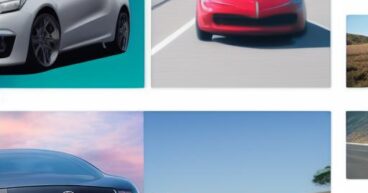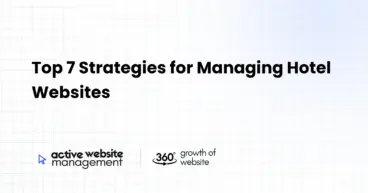January 1, 2025
8 min read
Creating high-converting landing pages is one of the most crucial elements in running a successful Shopify store. A landing page is your best opportunity to make a great first impression, engage visitors, and guide them toward making a purchase or taking the desired action. However, creating a landing page that converts effectively requires more than just a pretty design; it requires strategy, testing, and optimization.
In this comprehensive guide, we’ll walk you through the key steps to create high-converting landing pages for your Shopify store. Whether you’re a seasoned eCommerce entrepreneur or a beginner, you’ll find valuable insights, practical tips, and examples to boost your conversions.
1. What is a Landing Page?
A landing page is a standalone web page created specifically for a marketing or advertising campaign. When a visitor clicks on an ad, a search result, or an email link, they’re directed to this page with a singular focus: to convert the visitor into a customer or lead.
In the case of Shopify, a landing page might be designed to promote a specific product, offer a discount, highlight a seasonal sale, or drive sign-ups for a newsletter. The goal is always to capture the visitor’s attention and guide them toward a clear next step.
2. Why Are Landing Pages Important for Shopify Stores?
Landing pages are an essential tool for Shopify store owners looking to increase conversions and drive sales. Here’s why:
- Focused Intent: Unlike other pages on your website, landing pages have a clear, singular purpose—converting visitors. There are no distractions or competing actions. Everything on the page is designed to move the visitor toward a specific goal.
- Better Ad Performance: If you’re running ads (Google, Facebook, etc.), directing traffic to a landing page increases your chances of converting visitors. It’s more relevant than sending them to your homepage, which is cluttered with various products and information.
- Improved Customer Experience: A well-designed landing page speaks directly to the visitor’s needs and interests, providing them with exactly what they are looking for.
3. Best Practices for Designing High-Converting Shopify Landing Pages
Creating an effective landing page is an art form, but there are several tried-and-tested best practices that can guide you in the right direction. Let’s dive into them.
Don’t Just Maintain Your Website—
Grow It using Active Website Management! Don't Wait for Growth—Accelerate It with Active Website Management
3.1 Keep It Simple and Focused
The number one rule for landing page design is simplicity. Too much information can overwhelm visitors and cause them to leave before they take any action. Here’s how to keep your landing page clean and effective:
- Minimal text: Focus on a few compelling, benefit-driven lines of text.
- Clear navigation: Ideally, limit or completely remove navigation links that can distract users from the primary goal.
- Concise content: Every word and image should contribute to the main goal of the page.
3.2 Use Attention-Grabbing Headlines
Your headline is the first thing a visitor sees when they land on your page, so it needs to grab their attention immediately. A good headline should:
- Address the visitor’s pain point or desire.
- Offer a solution or value proposition.
- Be clear and direct.
For example, instead of a generic “Sale Page,” use something specific like, “Get 20% Off Your First Order—Today Only!”
3.3 Include Clear and Compelling Call-to-Actions (CTAs)
Your CTA is the gateway to conversion. Without a strong, persuasive CTA, all your efforts on the landing page might go to waste. Here’s how to optimize your CTA:
- Be action-oriented: Use verbs like “Shop Now,” “Claim Your Offer,” or “Sign Up for Free.”
- Create urgency: Phrases like “Limited Time Only” or “Hurry, Before It’s Gone” can motivate visitors to act quickly.
- Place CTAs strategically: Include CTAs above the fold (visible without scrolling), and consider placing them at the end of the page as well for easy access.
3.4 Showcase Your Products with High-Quality Images
Visuals play a huge role in eCommerce conversion. Your visitors want to see exactly what they’re buying, so it’s essential to use high-quality, clear images of your products.
- Use high-resolution images that allow users to zoom in and see details.
- Show your product in use: Lifestyle images help visitors visualize how the product fits into their life.
3.5 Leverage Social Proof
People trust other people’s opinions. Social proof, such as customer reviews, testimonials, or user-generated content (UGC), can increase trust and credibility, which ultimately leads to higher conversion rates.
- Customer reviews: Display product reviews or testimonials prominently.
- Ratings and reviews: If your Shopify store integrates with a review system, showcase your ratings.
3.6 Optimize for Mobile
Mobile shopping is on the rise, and it’s crucial that your landing page is fully responsive. If a visitor lands on your page from their smartphone and the page doesn’t load correctly, you risk losing the sale.
- Responsive design: Ensure the landing page is easy to navigate and read on mobile devices.
- Fast load times: Compress images and optimize your landing page for speed, as delays can turn visitors away.
4. Optimizing Your Landing Page for SEO
To get traffic to your Shopify landing page, you need to make sure it’s optimized for search engines. Here’s how:
- Keyword research: Use tools like Google Keyword Planner or Ahrefs to find keywords that your target audience is searching for. Integrate these keywords naturally into your headline, subheadings, body copy, and meta description.
- Meta tags: Write an engaging meta title and description to improve click-through rates from search engines.
- Image alt text: Include relevant keywords in your image alt text to improve visibility in image searches.
- Mobile optimization: As mentioned above, mobile-friendly pages are a ranking factor for Google.
Check out our SEO for WooCommerce blog for further tips on optimizing your eCommerce store for search engines.
5. How to Use Active Website Management to Improve Landing Pages
Active Website Management (AWM) is a service that can help you constantly improve and optimize your website, including landing pages. With AWM, you get:
- Unlimited updates and improvements: Regular updates to ensure your landing pages are always fresh and performing well.
- SEO enhancements: Continuous SEO optimization to keep your landing pages ranking high on search engines.
- Speed optimization: A fast-loading website is crucial for conversions, and AWM ensures your landing page performance is top-notch.
- Security enhancements: With AWM’s security protocols, your landing page and the entire website stay safe from cyber threats.
By leveraging AWM, you’ll ensure that your landing pages evolve with changing trends, providing you with long-term success.
6. A/B Testing: How to Test and Improve Your Landing Pages
Even with all the best practices in place, there’s always room for improvement. A/B testing allows you to test different versions of your landing page to determine which one performs best.
- Test one element at a time: Focus on one change per test, such as a different headline or CTA.
- Analyze results: Track metrics like conversion rates, bounce rates, and average time on page.
- Implement changes: Once you’ve identified the best-performing version, make those changes permanent.
Don't Wait for Growth—Accelerate It with
Active Website Management Don't Wait for Growth—Accelerate It with Active Website Management
7. Tracking Metrics and Analytics for Landing Page Success
To know if your landing page is performing well, you need to track key metrics:
- Conversion rate: The percentage of visitors who take the desired action (e.g., making a purchase or signing up).
- Bounce rate: The percentage of visitors who leave without interacting.
- Average time on page: How long visitors stay on the landing page.
You can use tools like Google Analytics or Shopify’s built-in analytics to monitor these metrics.
8. Common Landing Page Mistakes to Avoid
Even the most experienced designers can fall into common traps. Here are a few mistakes to watch out for:
- Overcomplicating the design: Too much information or too many options can confuse visitors.
- Weak CTAs: Generic or unclear calls-to-action that don’t compel users to act.
- Slow load times: Visitors won’t wait around for your page to load. Make sure your page is optimized for speed.
9. Conclusion
Creating high-converting landing pages for Shopify isn’t just about having a great design. It’s about understanding your customers, aligning your content with their needs, and continuously optimizing your page to improve performance. By following these steps and best practices, you can create landing pages that drive conversions, boost sales, and help your Shopify store thrive.
Remember to keep testing, optimizing, and evolving your landing pages to stay ahead of the competition. And with the help of Active Website Management, you can ensure that your landing pages are always optimized for success!





